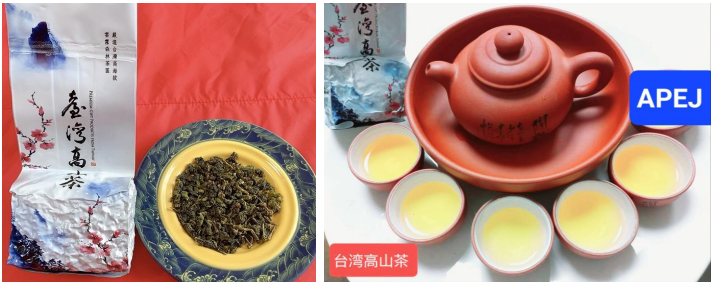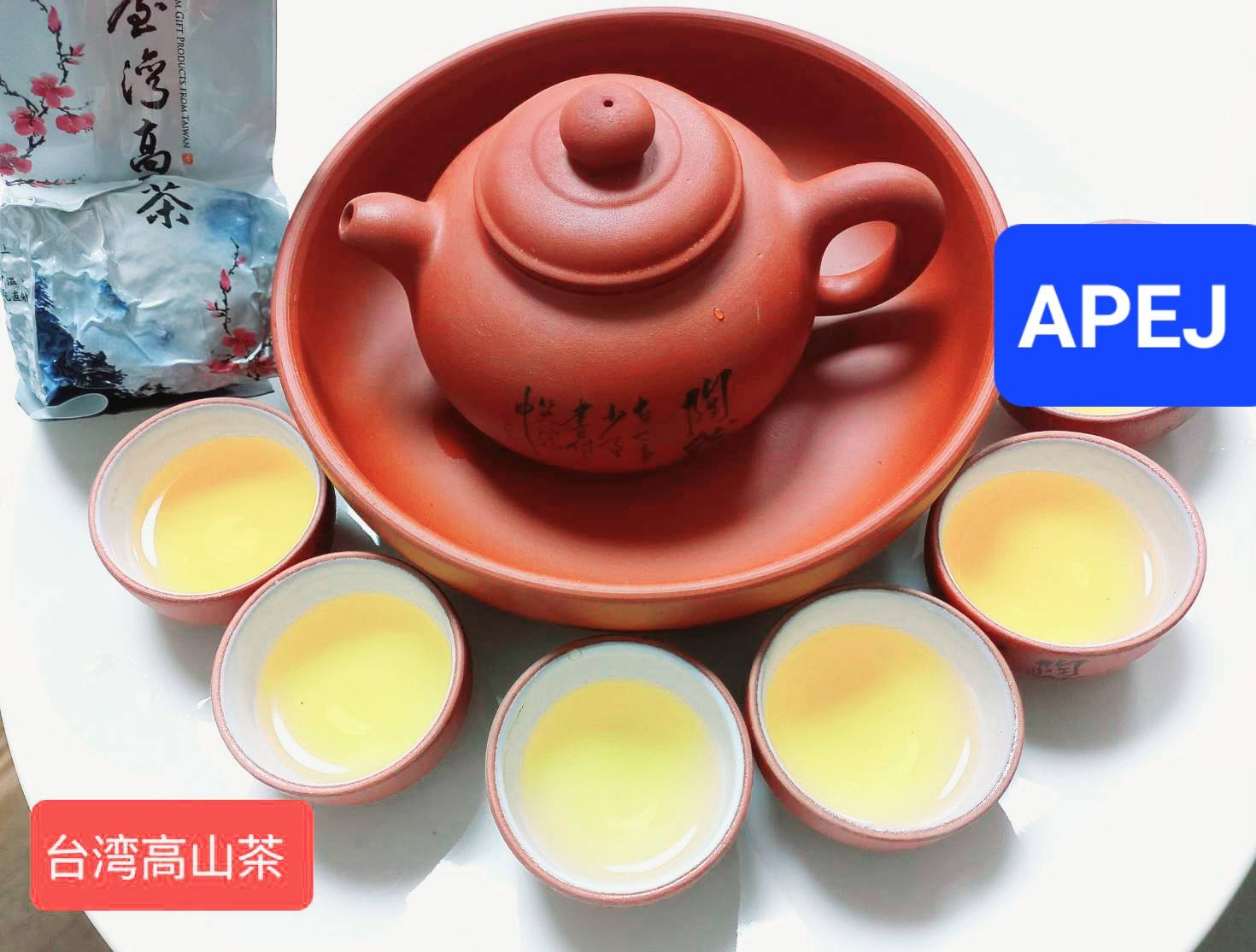(APEJ 泛亞) Oolong tea MOC001(300g)
Takayama oolong tea is loved from many people
Taiwanese high mountain tea can realize the claim written in the Shennong Materia Medica: "Shennong tasted hundreds of herbs and encountered 72 kinds of poison every day, and tea became the antidote."
As the Shennong Food Classic says, "Tea has a long history. Drinking tea makes you feel healthy and happy.", fermentation and charcoal roasting are very important in the process of making tea.
In other words, in order to make Taiwanese high mountain tea into a healthy and a high quality tea, it needs to be fermented and roasted.
Fermentation is an important step in the production of high mountain tea. If the fermentation degree is less than 50%, the tea's feature will be relatively cold. Conversely, if the fermentation degree is more than 50%, the tea will be relatively warm. For example, green tea has zero fermentation, so its feature is cold. Black tea is 100% fermented, so it has the feature of warmness.
On the other hand, high mountain oolong tea is a semi-fermented tea between green tea and black tea.
Early high mountain oolong tea is a semi-fermented tea, but the degree of fermentation is relatively sufficient at about 50%, so it is a mild and neutral tea. However, due to changes in the times and trends, modern high mountain oolong tea emphasizes the aroma and characteristics of the mountains, and the tea water must be golden and light green. Therefore, the degree of fermentation is about 30%, which makes it cold. It is not suitable for modern office workers who are prone to cold.
However, high mountain oolong tea with a fermentation degree of about 30% can be properly roasted to remove the coldness and have a more mellow and refreshing taste. Even modern people who are prone to cold will not feel any physical discomfort due to cold if they drink roasted Taiwanese high mountain oolong tea.
For details on the subsequent processing of Taiwanese high mountain tea after hand-picking, please refer to the second article, "High-quality Taiwanese high mountain tea: fermentation and roasting are required."
Oolong tea is broadly defined internationally as a semi-fermented tea. It is a semi-fermented tea processed using the oolong tea manufacturing method, and according to the international definition, it is broadly called "oolong tea". And if the tea leaves are produced in high mountain tea areas at 1,000 meters above sea level, they may be called "high mountain oolong tea".
However, in Taiwan, "Taiwan oolong tea" has stricter regulations. Genuine "Taiwan oolong tea" refers to tea leaves with limited varieties of oolong tea (such as green heart oolong tea, barley oolong tea, and large leaf oolong tea) and processed in the oolong tea manufacturing process. In other words, "Taiwan high mountain oolong tea" specifically refers to Taiwan high mountain tea with oolong tea varieties (such as green heart oolong tea, barley oolong tea, and large leaf oolong tea) and processed in the oolong tea manufacturing process.
High mountain oolong tea is a tea product made by cultivating tea leaves picked from mountains at 1,000 meters above sea level through a series of processes. It is also the name of high mountain tea widely used in Taiwan.
High mountain oolong tea is one of the famous traditional teas in China, named after the high altitude mountainous areas where it is grown. This type of tea is mainly produced in the mountainous areas of central and northern Taiwan, but also in some mountainous areas of Fujian and Guangdong.
Characteristics:
1. Taste: High mountain oolong tea has a fresh floral and fruity aroma. It has a mellow and sweet taste, and a long-lasting fruity aftertaste.
2. Leaves: The tea leaves have a dark green appearance and are semi-fermented. The leaves are large and vary in shape, often with a curled or crimped shape.
3. Production process: High mountain oolong tea is a semi-fermented tea, and goes through processes such as withering, shaking, sterilization, and rolling. The different degrees of these production processes result in different aromas and tastes of the tea. Therefore, the buyer needs to try the tea to determine whether it suits their taste.
4. Characteristics: Oolong tea is a partially fermented tea, and the degree of fermentation is intermediate between green tea and black tea. It is a tea that combines the aroma of green tea and the mellowness of black tea.
5. Flavor: The tea soup is usually yellow-green or amber in color. It is characterized by a complex aroma of flowers, fruits, honey, etc., and a mellow and sweet taste.
Growing environment:
The growing environment of high mountain oolong tea is usually in high mountain areas at an altitude of 1000 to 2000 meters. These areas are suitable for growing tea, with a cool climate, abundant sunlight, a lot of fog and clouds, fertile soil, and little pollution. The climate of the high mountain area allows the tea plant to grow slowly. As a result, the leaves are thick and rich in flavor.
Benefits:
• It is rich in health-beneficial ingredients such as tea polyphenols, amino acids, and vitamins that help maintain physical and mental health.
• The unique floral aroma and tea taste make it a popular tea among tea lovers.
In general, high mountain oolong tea is not only a kind of tea with rich cultural background, but also an excellent choice for enjoying the aroma of tea and tasting life.

How to make tea
1. Warm the tea utensils by pouring hot water over them. Add an appropriate amount of tea leaves and pour boiling water again.
2. You can drink 3 to 6 times with one tea leaf.
3. You can enjoy it even more by using ceramic tea utensils.
Product name: Tea leaves
Ingredients: Natural tea leaves
Expiration date: Displayed on the surface
Shelf life: 2 years
Storage method: Store in a cool, dry place out of direct sunlight.
Origin: Taiwan
Weight: 300g

Are you from the EU regions?
Taiwantrade.com and iDealEZ.com uses analytical cookies and other tracking technologies to offer you the best possible user experience. By using our website, you acknowledge and agree to our cookie policy.
For more information on cookies or changing your cookies settings, read Taiwantrade & iDealEZ’s Privacy Policy.